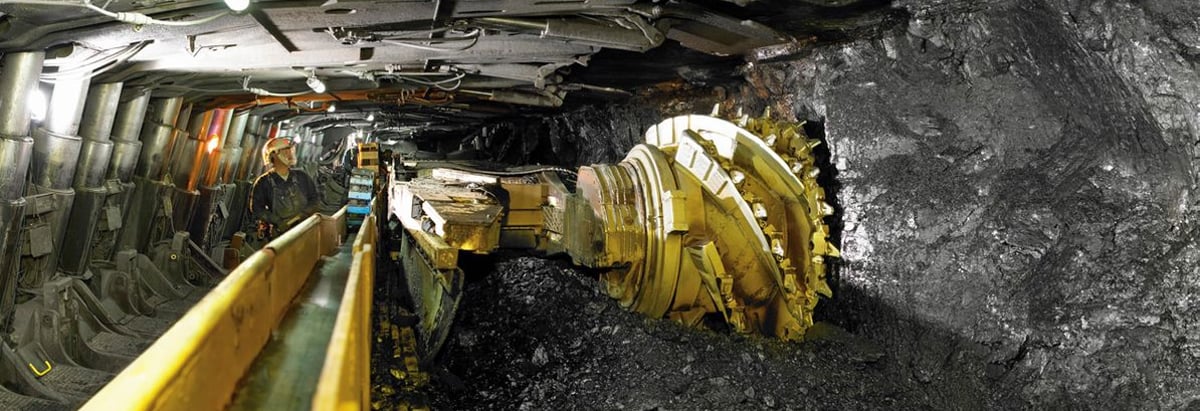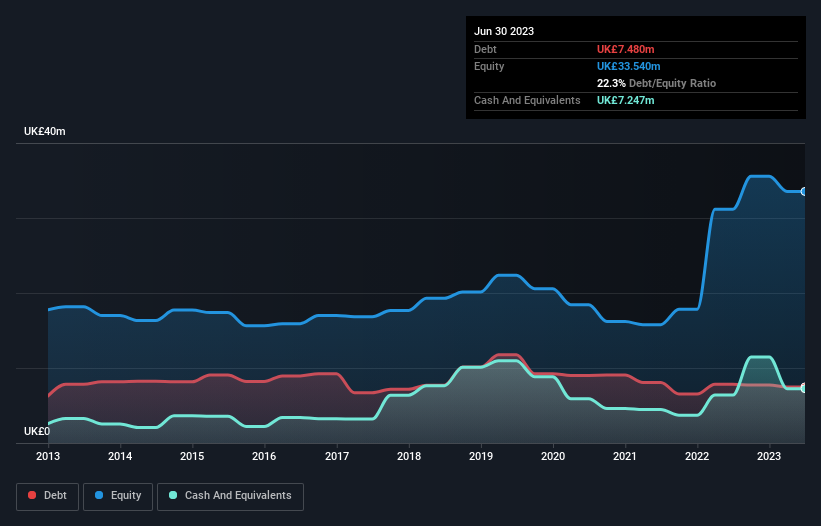- United Kingdom
- /
- Oil and Gas
- /
- LSE:BISI
These 4 Measures Indicate That Bisichi (LON:BISI) Is Using Debt Extensively

The external fund manager backed by Berkshire Hathaway's Charlie Munger, Li Lu, makes no bones about it when he says 'The biggest investment risk is not the volatility of prices, but whether you will suffer a permanent loss of capital.' So it might be obvious that you need to consider debt, when you think about how risky any given stock is, because too much debt can sink a company. As with many other companies Bisichi PLC (LON:BISI) makes use of debt. But the more important question is: how much risk is that debt creating?
What Risk Does Debt Bring?
Debt and other liabilities become risky for a business when it cannot easily fulfill those obligations, either with free cash flow or by raising capital at an attractive price. In the worst case scenario, a company can go bankrupt if it cannot pay its creditors. However, a more usual (but still expensive) situation is where a company must dilute shareholders at a cheap share price simply to get debt under control. By replacing dilution, though, debt can be an extremely good tool for businesses that need capital to invest in growth at high rates of return. When we think about a company's use of debt, we first look at cash and debt together.
View our latest analysis for Bisichi
How Much Debt Does Bisichi Carry?
As you can see below, Bisichi had UK£7.48m of debt at June 2023, down from UK£7.83m a year prior. However, it also had UK£7.25m in cash, and so its net debt is UK£233.0k.

How Healthy Is Bisichi's Balance Sheet?
According to the last reported balance sheet, Bisichi had liabilities of UK£17.0m due within 12 months, and liabilities of UK£5.61m due beyond 12 months. On the other hand, it had cash of UK£7.25m and UK£5.65m worth of receivables due within a year. So its liabilities total UK£9.75m more than the combination of its cash and short-term receivables.
This deficit is considerable relative to its market capitalization of UK£11.7m, so it does suggest shareholders should keep an eye on Bisichi's use of debt. Should its lenders demand that it shore up the balance sheet, shareholders would likely face severe dilution.
In order to size up a company's debt relative to its earnings, we calculate its net debt divided by its earnings before interest, tax, depreciation, and amortization (EBITDA) and its earnings before interest and tax (EBIT) divided by its interest expense (its interest cover). The advantage of this approach is that we take into account both the absolute quantum of debt (with net debt to EBITDA) and the actual interest expenses associated with that debt (with its interest cover ratio).
Bisichi has very little debt (net of cash), and boasts a debt to EBITDA ratio of 0.012 and EBIT of 20.4 times the interest expense. So relative to past earnings, the debt load seems trivial. The modesty of its debt load may become crucial for Bisichi if management cannot prevent a repeat of the 26% cut to EBIT over the last year. When it comes to paying off debt, falling earnings are no more useful than sugary sodas are for your health. The balance sheet is clearly the area to focus on when you are analysing debt. But it is Bisichi's earnings that will influence how the balance sheet holds up in the future. So if you're keen to discover more about its earnings, it might be worth checking out this graph of its long term earnings trend.
Finally, while the tax-man may adore accounting profits, lenders only accept cold hard cash. So we always check how much of that EBIT is translated into free cash flow. Looking at the most recent two years, Bisichi recorded free cash flow of 47% of its EBIT, which is weaker than we'd expect. That weak cash conversion makes it more difficult to handle indebtedness.
Our View
While Bisichi's EBIT growth rate has us nervous. To wit both its interest cover and net debt to EBITDA were encouraging signs. When we consider all the factors discussed, it seems to us that Bisichi is taking some risks with its use of debt. So while that leverage does boost returns on equity, we wouldn't really want to see it increase from here. The balance sheet is clearly the area to focus on when you are analysing debt. But ultimately, every company can contain risks that exist outside of the balance sheet. To that end, you should be aware of the 3 warning signs we've spotted with Bisichi .
At the end of the day, it's often better to focus on companies that are free from net debt. You can access our special list of such companies (all with a track record of profit growth). It's free.
Valuation is complex, but we're here to simplify it.
Discover if Bisichi might be undervalued or overvalued with our detailed analysis, featuring fair value estimates, potential risks, dividends, insider trades, and its financial condition.
Access Free AnalysisHave feedback on this article? Concerned about the content? Get in touch with us directly. Alternatively, email editorial-team (at) simplywallst.com.
This article by Simply Wall St is general in nature. We provide commentary based on historical data and analyst forecasts only using an unbiased methodology and our articles are not intended to be financial advice. It does not constitute a recommendation to buy or sell any stock, and does not take account of your objectives, or your financial situation. We aim to bring you long-term focused analysis driven by fundamental data. Note that our analysis may not factor in the latest price-sensitive company announcements or qualitative material. Simply Wall St has no position in any stocks mentioned.
About LSE:BISI
Bisichi
Engages in coal mining and processing activities in the United Kingdom and South Africa.
Solid track record with excellent balance sheet and pays a dividend.
Market Insights
Community Narratives



